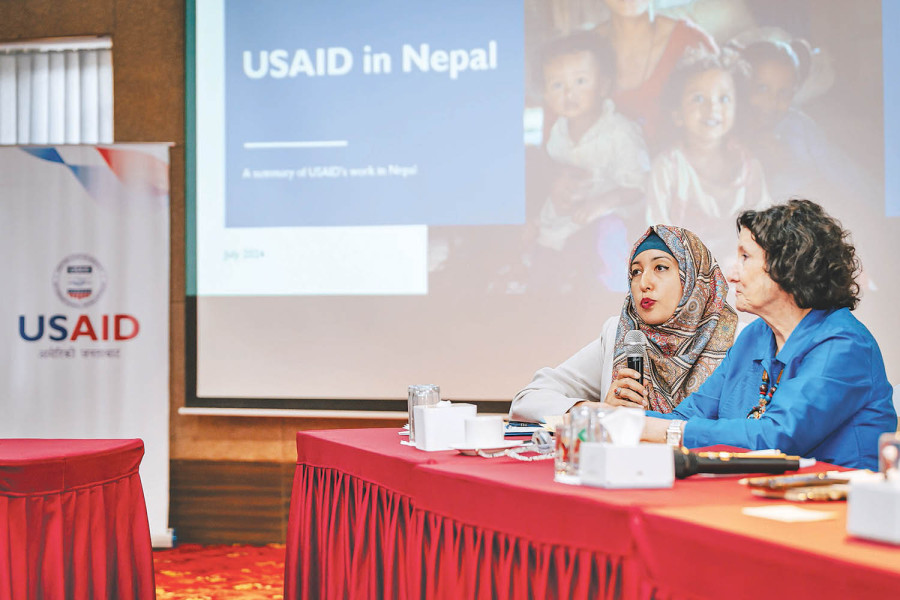Money
USAID claims better-than-expected results in sectors of support in Nepal
The USAID said $62 million in sales of agricultural products was recorded in the projects it supported.
Post Report
The US Agency for International Development says its support of the economic sector, particularly in agriculture, has yielded better-than-expected results in Nepal, with output boosted by 139 percent.
USAID on Thursday held an interaction in Kathmandu to explore the depth of the Nepal-US partnership and review the achievements.
Officials said that among the five major sectors USAID supports—including health, education, democracy and governance, economic growth and environment, and resilience—the farmers and small enterprises sector achieved better-than-expected results.
The USAID said $62 million in sales of agricultural products was recorded in the projects it supported.
The USAID's economic growth activities aim to improve the income-generating potential of the poorest of the poor, expand young people's access to jobs, and increase farmers' incomes and food security.
The economic department of USAID works in the irrigation and agriculture sectors. The department develops and modernises the agricultural sector and also helps the government improve its policy.
The department mainly deals with tourism, agro-processing, and digital services. USAID is focused on paddy, maize, lentils, poultry and goat farming in the agricultural sector.
It has supported $125 million annually in five key sectors in Nepal.
Nepal and the United States signed a five-year agreement to continue regular US aid to Nepal, which is expected to be $659 million.
The proposed aid is about $100 million more than the total disbursement by the US government through USAID over the last five years until mid-July 2021.
An official working on democracy, rights and governance said that USAID has been spending $10.20 million in the democracy and governance sector.
“We have been providing direct support to the Election Commission of Nepal to strengthen the organisational capacity and provide electoral education to youth, women and marginalised people,” said Bishwas Rana, head of the democracy, rights and governance department of the agency. The USAID also provides technical help for the commission.
In the general election of 2017, the invalid votes under the proportional election category were 14.7 percent. In the general election of 2022, this number declined to 5 percent, which Rana attributed to the support.
The USAID officials said they support strengthening Nepal's organisational capacity at the local level.
USAID has been partnering with a fact-checking organisation to minimise the spread of fake news through the media and social media.
The agency claims to be spending $60 million annually to improve Nepal’s healthcare system.
It provided $40 million during the Covid-19 pandemic for vaccines and other healthcare equipment.
USAID spends 15 percent of its annual budget on the environment and resilience sector in Nepal. The organisation is helping the government finalise 11 different hydropower projects valued at $2.4 billion that could generate 1,200 MW.




 14.12°C Kathmandu
14.12°C Kathmandu













